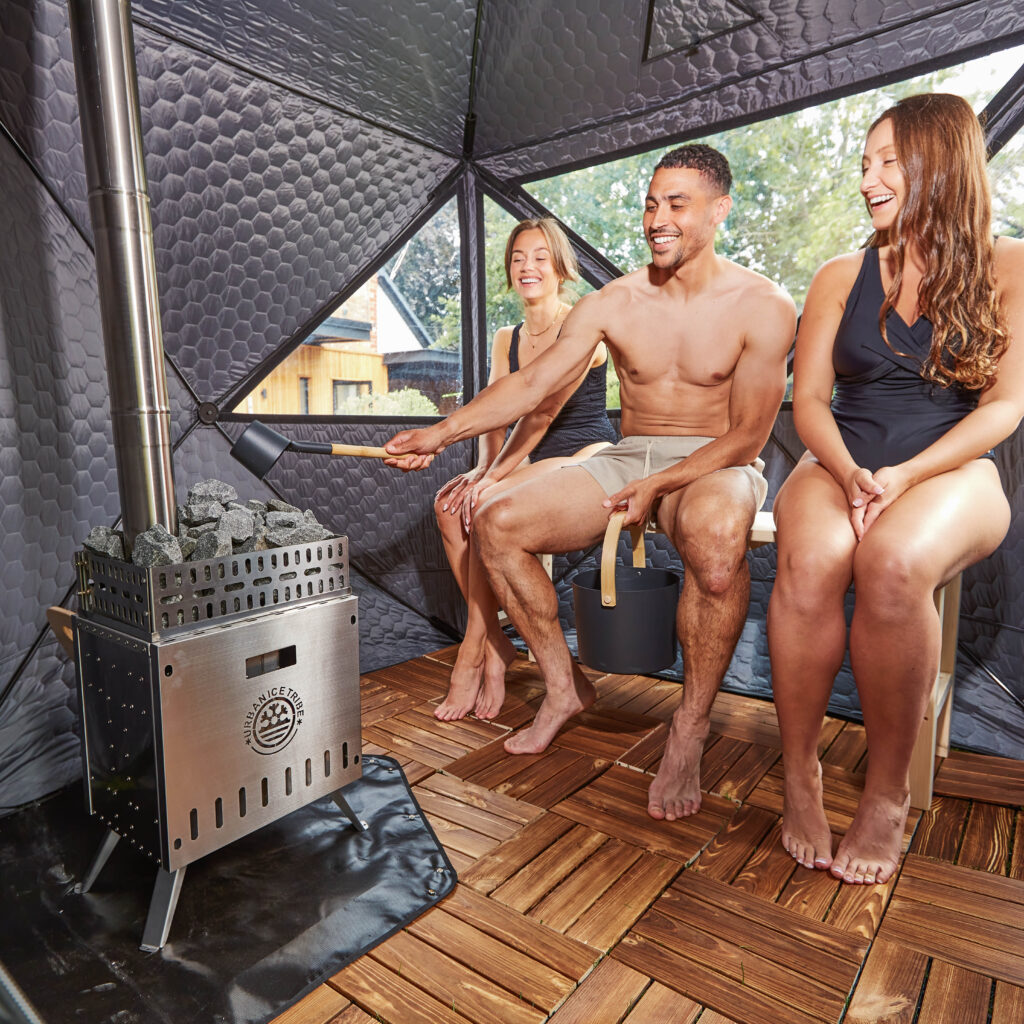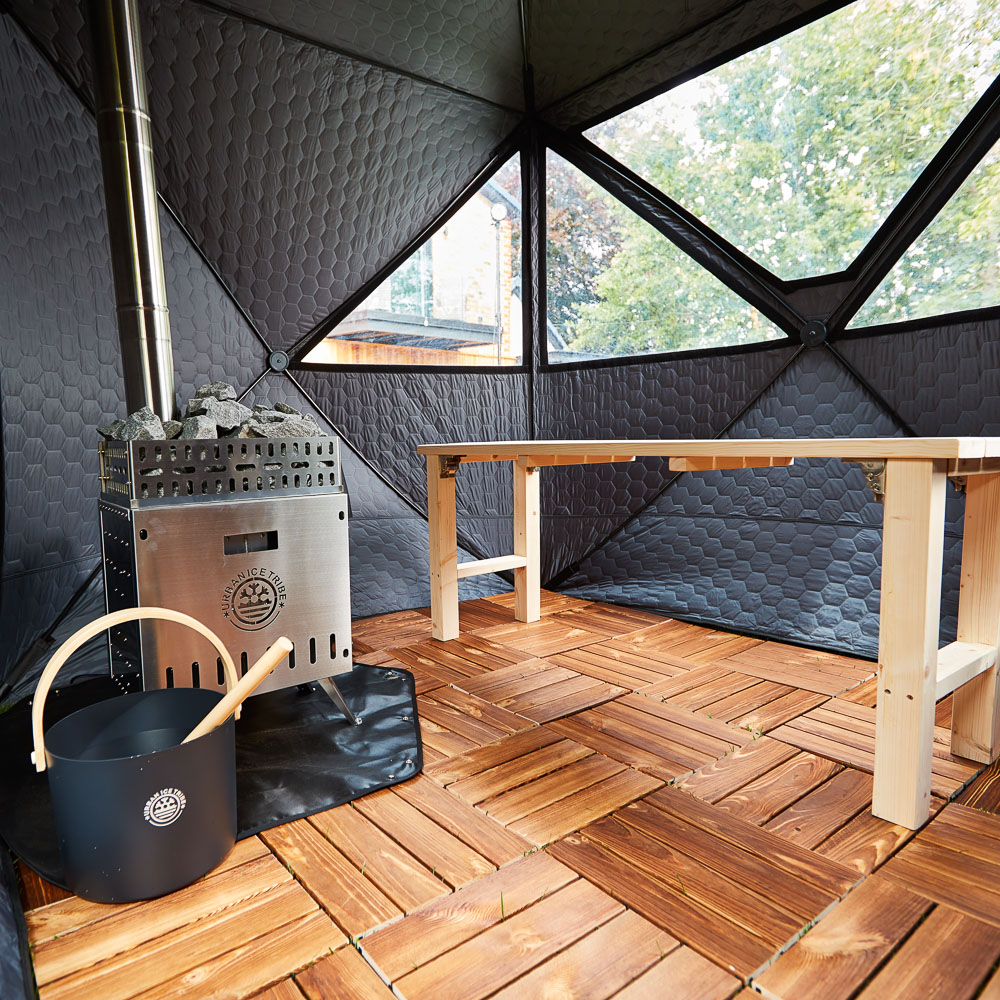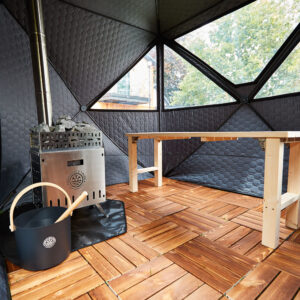
Ice Baths: A Key to Enhanced Recovery and Vitality for Athletes
Explore how ice baths can boost recovery and enhance vitality for athletes. Discover practical tips and insights to elevate your performance. Read more!
Spend Over £500 To Get Free UK Delivery - Excludes Certain Postcodes & Round Ice Baths

After a tough workout, your muscles are crying out for recovery support. While most fitness enthusiasts focus on nutrition and rest, there’s a powerful recovery tool hiding in plain sight at most gyms. Research suggests that using a sauna after a workout can dramatically enhance your recovery process, with studies showing up to 47% reduction in muscle soreness within just 24 hours.
The health benefits of post workout sauna use extend far beyond simple relaxation. When you step into that sauna room after an exercise session, your body initiates a complex physiological response that promotes muscle recovery, improves cardiovascular health, and supports overall wellness. This comprehensive guide explores the science-backed advantages of sauna post workout use and provides practical guidance for incorporating sauna sessions safely into your fitness routine.
When you enter a sauna room following your workout session, your body undergoes remarkable physiological changes that amplify the recovery process. The heat exposure triggers rapid vasodilation, causing your blood vessels to expand significantly. This process can increase peripheral circulation by up to 100%, effectively doubling your baseline blood flow rate.

This increased blood flow serves multiple purposes for your post workout routine. The enhanced circulation helps shuttle oxygen rich blood and essential nutrients directly to your tired muscles while simultaneously removing metabolic waste products like lactic acid that accumulate during exercise. This dual action of delivery and removal is what makes sauna bathing so effective for recovery.
The sweating process activated by sauna use offers another layer of benefit. As your core temperature rises, your body initiates its natural cooling mechanism through perspiration. This process helps eliminate metabolic byproducts from your system while allowing your skin to serve as an additional avenue for heat regulation and waste removal.
Heat exposure also triggers the release of endorphins, your body’s natural “feel-good” hormones, while simultaneously reducing levels of cortisol, the primary stress hormone that can impede recovery. This hormonal shift creates an optimal environment for your body’s restorative processes to function efficiently.
The post workout sauna benefits for muscle recovery are among the most compelling reasons to incorporate sauna sessions into your fitness goals. The increased blood flow generated by heat exposure delivers crucial oxygen and nutrients to fatigued muscle fibres, accelerating the replenishment of ATP stores and supporting cellular repair mechanisms.
Clinical research demonstrates that regular sauna use can reduce Delayed Onset Muscle Soreness (DOMS) by up to 47% within 24 hours following exercise. This significant reduction occurs because the heat causes muscle fibres and surrounding connective tissue to relax, which diminishes tension and reduces subjective pain ratings.
Studies with athletes have shown that sauna post workout use reduces oxidative stress biomarkers by up to 17.5%, indicating a measurable decrease in cellular stress caused by strenuous physical activity. This reduction in oxidative stress supports faster recovery and may contribute to improved long-term training adaptations.
The heat from sauna sessions helps muscles relax more completely than passive rest alone. This relaxation effect extends beyond the immediate post-workout period, with many users reporting reduced muscle tension and improved flexibility in the days following sauna use. For athletes performing high-intensity or resistance training, where muscle microtrauma requires efficient recovery, this enhanced relaxation response can significantly impact training consistency and performance outcomes.
A sauna session after your workout provides remarkable cardiovascular benefits that complement your exercise routine. The heat exposure mimics many of the cardiovascular responses observed during moderate-intensity exercise, with heart rate commonly reaching 100-150 beats per minute during a typical session.
This elevated heart rate can approach 70-75% of age-predicted maximum heart rate for many adults, essentially providing a gentle cardiovascular workout without additional physical stress on joints and muscles. This makes sauna use particularly valuable on recovery days or for individuals dealing with joint issues who need to maintain cardiovascular fitness.

Regular sauna use supports long-term heart health through improved arterial compliance and reduced resting blood pressure. These benefits result from repeated vasodilation and enhanced microcirculation that occur during each session. The landmark Finnish cohort study provides compelling evidence for these cardiovascular benefits, showing a 27% reduction in heart disease mortality among frequent sauna users compared to non-users.
The study found that participants using a sauna 4-7 times per week had notably reduced risk of cardiovascular disease compared to those going once per week. This suggests that consistent sauna bathing can be an effective strategy to improve cardiovascular health and reduce the risk of cardiovascular disease over time.
These cardiovascular adaptations include increased plasma volume, improved endothelial function, and more efficient thermoregulatory responses. For fitness enthusiasts, these improvements translate to better exercise capacity and enhanced recovery between workout sessions.
While sauna after a workout won’t replace your cardiorespiratory fitness routine for weight loss, it can provide modest metabolic benefits as part of a comprehensive approach. Understanding the difference between immediate effects and long-term benefits is crucial for setting realistic expectations.
The immediate water weight loss during a sauna session typically ranges from 0.5-1.5kg per 30 minutes, depending on individual factors and sauna conditions. However, this weight is rapidly regained through proper hydration and should not be confused with actual fat loss.
The metabolic benefits are more subtle but meaningful. Caloric energy expenditure increases to approximately 1.5-2 times the resting metabolic rate during sauna use. For a 70kg adult, this typically translates to an additional 60-150 kilocalories burned per 30-minute session, varying by individual characteristics and sauna temperature.
More significantly, the stress relief and improved sleep quality associated with regular sauna use can support weight management goals. Lowered cortisol levels and better sleep are associated with improved weight control, as disruptions in either can drive cravings and overeating behaviors that undermine fitness routines.
The mental health benefits of using a sauna after exercise extend well beyond the immediate relaxation response. Post workout sauna sessions create a powerful combination of physical recovery and psychological restoration that supports overall well-being.
Sauna use promotes a significant reduction in cortisol levels both during and after the session, helping shift your nervous system into a parasympathetic (rest-and-digest) state. This hormonal shift is particularly beneficial after intense exercise when cortisol levels may be elevated from physical stress.
The release of endorphins, including beta-endorphin, during heat exposure naturally enhances mood and creates feelings of well-being. This endorphin response explains why many people report feeling emotionally refreshed and mentally clear following sauna sessions.
Regular sauna users frequently report improved sleep quality, which likely results from the core body temperature normalisation and beneficial hormonal changes that occur after sauna use. Quality sleep is fundamental to both physical recovery and mental health, making this benefit particularly valuable for active individuals managing demanding training schedules.
Emerging research suggests that sauna use can serve as an effective adjunct for managing anxiety and general life stress. The combination of quiet time, heat therapy, and physiological relaxation creates an ideal environment for mental restoration and stress relief.
Heat exposure through sauna use provides notable support for immune system function. The temporary increase in core body temperature stimulates white blood cell production, creating a mild stress adaptation that can “prime” your immune response for future challenges.
This immune system stimulation has been linked to reduced risk of respiratory infections among regular sauna users. Scandinavian populations with traditional sauna bathing practices show lower rates of common illnesses, though this correlation involves multiple lifestyle factors beyond sauna use alone.

While sweating does assist in removing certain substances from the body, including trace amounts of heavy metals like lead, mercury, and cadmium, as well as compounds like bisphenol A (BPA), the quantities are modest compared to the detoxification work performed by your liver and kidneys. It’s important to maintain realistic expectations about sauna’s detoxification capabilities.
From a skin health perspective, the enhanced circulation during sauna sessions helps maintain healthy skin by improving nutrient delivery and supporting natural cellular processes. The sweating process can also help clear pores, though proper hygiene practices remain essential.
Safe sauna use requires attention to hydration, session duration, and individual health considerations. Proper preparation and awareness of warning signs ensure you can enjoy the post workout sauna benefits while minimising risks.
Hydration represents the most critical safety consideration. You should pre-hydrate before entering the sauna, sip water during longer sessions if possible, and always rehydrate thoroughly afterward to replace fluids and electrolytes lost through sweating. Pay particular attention to replacing sodium and potassium, which are lost in significant quantities during perspiration.
Session duration should be limited to 15-20 minutes for experienced users, while beginners should start with 5-10 minute sessions to allow their body to acclimate to the heat. Listen to your body and exit immediately if you experience dizziness, lightheadedness, nausea, abnormal heart rate, or overwhelming fatigue.
Several health conditions contraindicate sauna use, including poorly-controlled heart disease, certain arrhythmias, unstable angina, recent myocardial infarction, and pregnancy (unless cleared by a physician). Individuals taking medications that affect sweating or those with autonomic dysfunction should consult their healthcare provider before using saunas.
Sauna etiquette emphasizes hygiene and respect for shared spaces. Always shower before entering the sauna room to maintain cleanliness for all users. Wear appropriate attire such as a towel or bathing suit, and always sit on a clean towel to prevent direct contact between your body and the sauna benches.
Keep conversations quiet or minimal to maintain the relaxing atmosphere that others seek. Leave electronics in your locker, as the heat can damage devices and their use disrupts the peaceful environment that makes sauna sessions restorative.
The timing of sauna use significantly impacts both safety and effectiveness. The post-workout window represents the optimal time for sauna sessions because your muscles are already warm and blood flow is elevated from exercise, which enhances the recovery effects of heat exposure.
Using a sauna immediately before workouts poses significant risks including dehydration, electrolyte depletion, and increased risk of heat exhaustion or heat stroke during subsequent exercise. Pre-workout sauna use can also impair exercise performance by elevating core body temperature and depleting fluid stores before physical activity begins.
The ideal approach involves allowing for a brief cool-down period of 5-10 minutes after completing your exercise session. This transition time helps bring your heart rate and body temperature into a safe range before sauna entry, ensuring maximum benefits while minimising the risk of overheating and heat exhaustion.
This post-exercise timing also takes advantage of the exercise-induced increase in growth hormone secretion, which can be further enhanced by the mild stress response created by heat exposure. This hormonal environment supports both tissue repair and muscle adaptation processes.
Different types of saunas offer varying benefits for post-workout recovery. Understanding these differences can help you choose the most appropriate option for your fitness goals and personal preferences.
Traditional saunas, also known as Finnish or dry saunas, operate at temperatures between 160-200°F (70-93°C) with low humidity levels. These conventional saunas provide the most intense heat experience, promoting rapid and extensive sweating while delivering significant cardiovascular stress similar to moderate exercise.

Infrared saunas use light panels to warm your body directly rather than heating the surrounding air. These units operate at lower ambient temperatures, typically 120-140°F (49-60°C), which some users find more comfortable for longer sessions. Research suggests that infrared light may penetrate tissue more deeply than traditional dry heat, potentially enhancing localised muscle recovery and pain relief.
Steam rooms operate at lower temperatures but much higher humidity levels, creating a different therapeutic environment. While steam sauna sessions produce less intense sweating than dry saunas, they offer particular benefits for individuals with respiratory concerns and provide excellent skin hydration effects.
Most gyms and fitness centres offer at least one type of sauna, making it easy to incorporate sauna sessions into your post workout routine, regardless of which variety is available.
While sauna use offers numerous benefits, awareness of potential risks ensures safe and effective sessions. The primary concerns relate to dehydration, electrolyte imbalance, and overheating, all of which can be prevented through proper preparation and attention to warning signs.
Dehydration represents the most common risk associated with sauna use. Excessive fluid loss without adequate replacement can lead to symptoms including headache, dizziness, weakness, and in severe cases, heat stroke. Always prioritize hydration before, during, and after sauna sessions.
Electrolyte imbalance can occur alongside dehydration, particularly with prolonged or frequent sauna use. Sodium and potassium losses through sweat can cause muscle cramps, irregular heart rhythms, and other complications. Consider electrolyte replacement drinks for longer sessions or when using saunas regularly.
Overheating symptoms include confusion, rapid heartbeat, nausea, and cessation of sweating despite continued heat exposure. These signs require immediate exit from the sauna, gradual cooling, and medical attention if symptoms persist.
Male fertility may be temporarily affected by high-heat sauna exposure, with studies showing temporary reductions in sperm count and quality. These effects typically normalize when regular temperature routines resume, but men trying to conceive should consider this factor.
Pregnant women and individuals with cardiovascular conditions, including high blood pressure or low blood pressure, should consult healthcare providers before incorporating sauna use into their routines to avoid potential complications.
How long should I wait after workout before using sauna? Wait 5-10 minutes after your workout session to allow your heart rate to stabilise before entering the sauna room. This brief cooling period ensures safer heat exposure while maintaining the enhanced circulation benefits from exercise.
Can I use sauna every day after workouts? Daily sauna use is possible for healthy adults, but increases dehydration risk. Listen to your body, maintain excellent hydration practices, and watch for warning signs of overuse such as persistent fatigue or difficulty recovering between sessions.
What should I drink during and after sauna sessions? Water is best for most sauna sessions. For prolonged or intense sessions exceeding 20 minutes, consider sports drinks containing electrolytes to replace sodium and potassium lost through sweating.
Is it normal to feel dizzy in the sauna? Mild lightheadedness can occur, but pronounced dizziness signals immediate need to exit the sauna. Cool down gradually, hydrate, and seek medical attention if symptoms persist or worsen.
Should I shower immediately after sauna or wait? Shower soon after leaving the sauna to cleanse sweat and bacteria from your skin. Use lukewarm water rather than cold to avoid shocking your system, unless your facility specifically recommends waiting periods.
Can beginners use sauna after their first workout? Yes, but start with very brief sessions of 5-10 minutes and ensure excellent hydration. New exercisers should focus on proper workout recovery fundamentals before adding sauna sessions to their routine.
What’s the difference between sauna and steam room benefits? Traditional sauna and infrared saunas primarily promote muscle recovery, circulation improvement, and cardiovascular benefits through dry heat. Steam rooms provide similar relaxation benefits while offering additional respiratory support and deeper skin hydration through wet heat.
How does sauna compare to ice baths for recovery? Ice baths rapidly reduce inflammation and are better for acute injury management, while saunas promote vasodilation, long-term muscle relaxation, and physiological adaptation. Many athletes use both methods alternately for contrast therapy, gaining benefits from both approaches.
Using a sauna after workout provides a scientifically-supported method to enhance recovery, support cardiovascular function, and promote overall wellness. The combination of increased blood circulation, muscle relaxation, stress relief, and immune system support makes post workout sauna sessions a valuable addition to any serious fitness routine.
Start with short sessions, prioritise hydration, and gradually increase duration as your body adapts to heat exposure. With proper safety practices and consistent use, sauna bathing can become a powerful tool for optimising your training recovery and supporting long-term health goals.

Founder of Urban Ice Tribe

Explore how ice baths can boost recovery and enhance vitality for athletes. Discover practical tips and insights to elevate your performance. Read more!

There’s nothing quite like the raw, elemental power of a pop-up sauna. Portable, authentic, and deeply restorative, it’s the perfect way to reconnect with nature and yourself. But to take your sauna ritual to the next level, the right sauna accessories can make all the difference.

Transform your outdoor space into a personal wellness retreat with the Urban Ice Tribe Sauna Tent. This detailed setup guide walks you through every step, from unboxing to your first steam session, blending practical instruction with the mindful ritual of heat therapy.
Helping men & women release anxieties & limiting beliefs to experience a life of freedom using powerful breathwork, cold water therapy, movement & sound healing.

No spam, notifications only about new products, updates, offers and announcements.